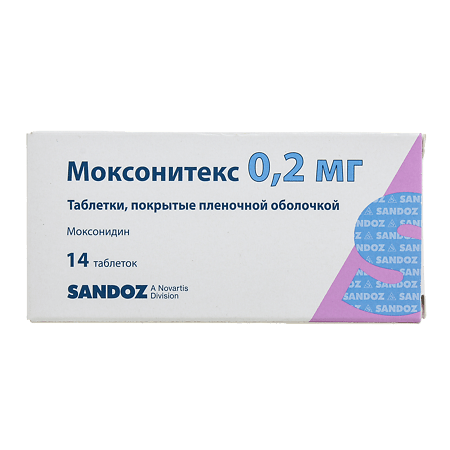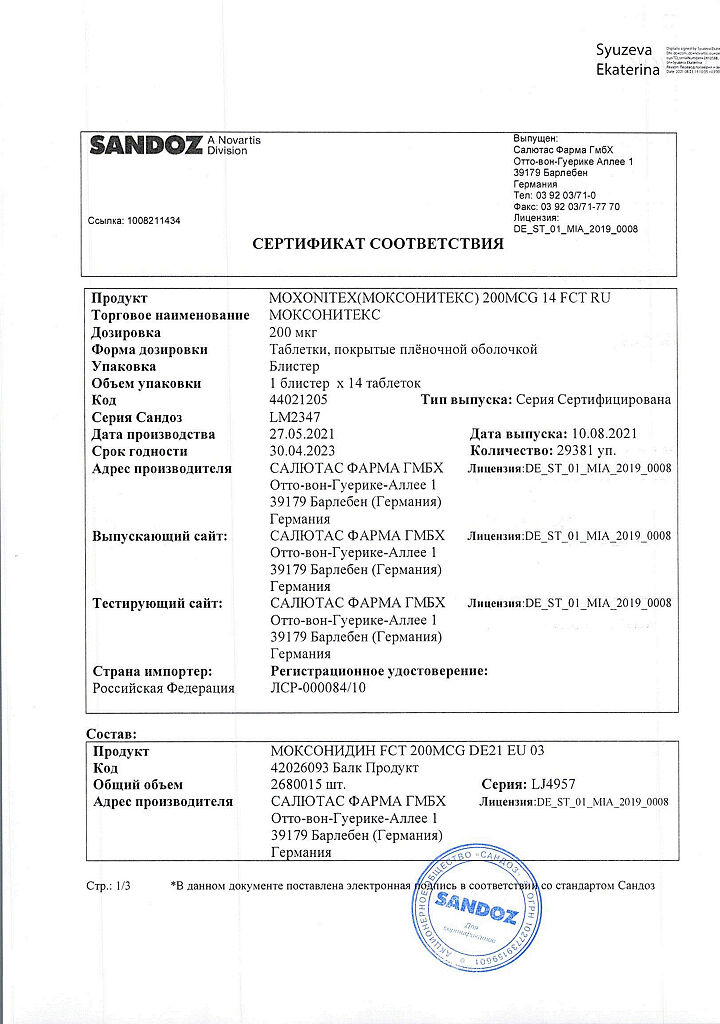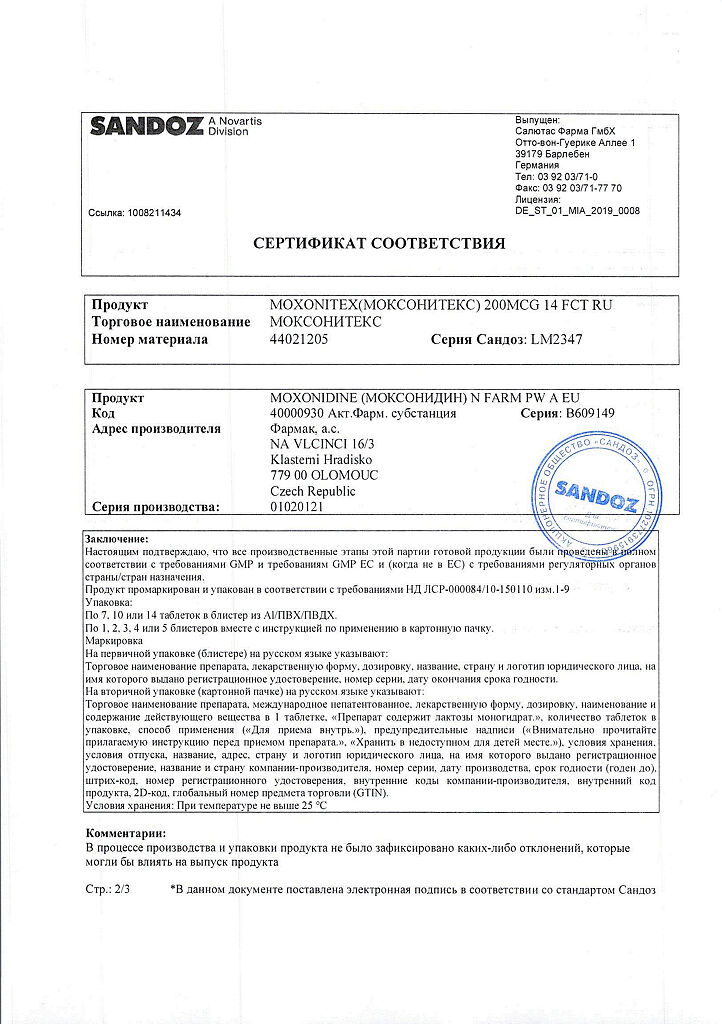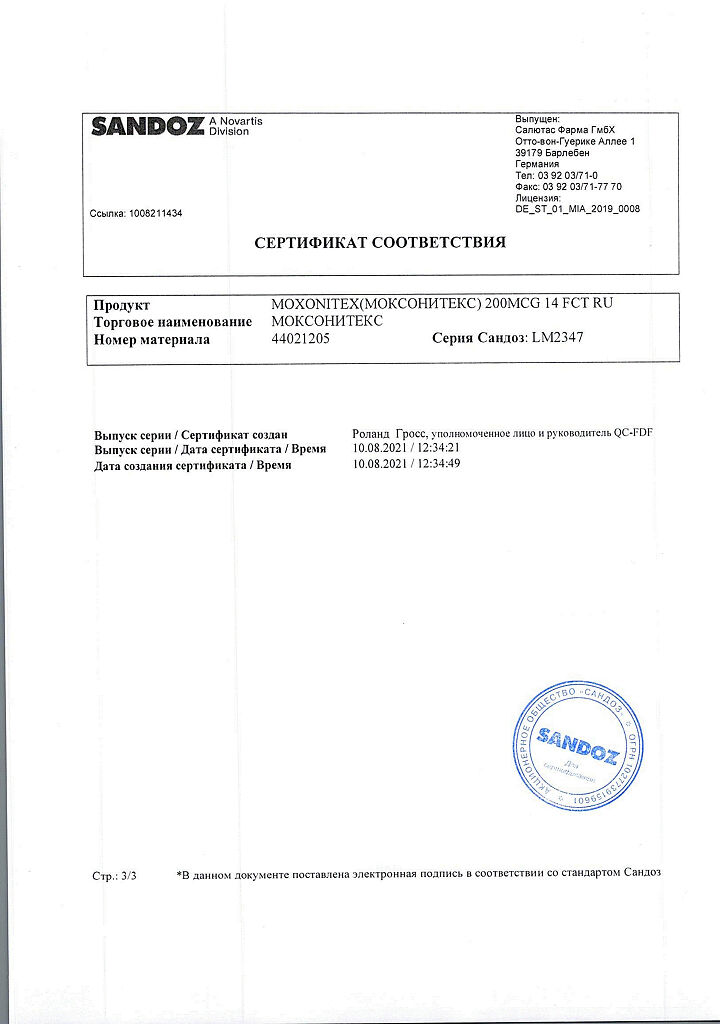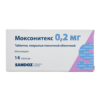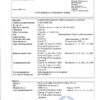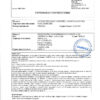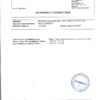No products in the cart.
Moxonitex, 0.2 mg 14 pcs
€7.36 €6.44
Description
Hypertension (high blood pressure)
– arterial hypertension.
Indications
Indications
– arterial hypertension.
Pharmacological effect
Pharmacological effect
Selective agonist of imidazoline receptors. Antihypertensive drug
Special instructions
Special instructions
During treatment, regular monitoring of blood pressure, heart rate and ECG is required.
If it is necessary to cancel simultaneously taken beta-blockers and Moxonitex, beta-blockers are canceled first, and only after a few days – Moxonitex. You should stop taking Moxonitex gradually.
Impact on the ability to drive vehicles and operate machinery
The effect of Moxonitex on the ability to drive vehicles or operate machinery has not been studied. Taking into account the possible occurrence of dizziness and drowsiness, patients should be careful when engaging in potentially hazardous activities, such as driving or operating equipment that require increased concentration.
Active ingredient
Active ingredient
Moxonidine
Composition
Composition
Light pink, film-coated tablets, round, biconvex.
1 tab. moxonidine 200 mcg
Excipients:
lactose monohydrate – 94.5 mg,
povidone K25 – 2 mg,
crospovidone – 3 mg,
magnesium stearate – 0.3 mg.
Film shell composition:
opadry Y 1 7000 – 3.498 mg (titanium dioxide – 1.093 mg, hypromellose – 2.186 mg, macrogol 400 – 0.219 mg), red iron oxide dye – 0.002 mg.
Contraindications
Contraindications
– history of angioedema;
— SSSU or sinoatrial block;
– AV block of II and III degrees;
– severe bradycardia (less than 50 beats/min at rest);
– severe heart rhythm disturbances;
— chronic heart failure (III-IV functional class according to the NYHA classification);
– unstable angina;
– severe liver failure;
– severe renal failure (creatinine clearance less than 30 ml/min, serum creatinine more than 160 µmol/l);
— age up to 18 years;
– lactation period;
– galactose intolerance, lactase deficiency or glucose-galactose malabsorption syndrome;
– hypersensitivity to moxonidine or any other component of the drug.
The drug should be used with caution and under the supervision of a physician in patients who have recently suffered a myocardial infarction or with peripheral circulatory disorders (intermittent claudication, Raynaud’s syndrome); in patients with moderately severe renal dysfunction (creatinine clearance 30-60 ml/min; serum creatinine 105-160 µmol/l), with liver dysfunction, pregnancy, depression, glaucoma, epilepsy, Parkinson’s disease.
Side Effects
Side Effects
Determination of the frequency of adverse reactions: often (≥1%), rarely (0.01%-0.1%), sometimes (<0.01%, isolated cases).
From the cardiovascular system: rarely – symptoms of vasodilation; sometimes – a pronounced decrease in blood pressure, syncope, Raynaud’s syndrome, peripheral edema.
From the side of the central nervous system: often – dizziness, headache, drowsiness, increased fatigue, sleep disturbance; sometimes – paresthesia, depression, anxiety.
From the digestive system: often – dryness of the oral mucosa, nausea, anorexia, constipation.
From the genitourinary system: sometimes – urinary retention or incontinence, impotence and/or decreased libido.
On the part of the sensory organ: sometimes – dry eyes, causing itching or a burning sensation.
Allergic reactions: sometimes – urticaria, itching, exanthema, angioedema.
Other: sometimes – gynecomastia, soreness of the parotid glands.
Interaction
Interaction
When moxonidine is co-administered with other antihypertensive drugs, the effect is mutually enhanced.
Beta-blockers increase bradycardia and the severity of negative ino- and dromotropic effects.
Moxonidine enhances the hypotensive effect of ethanol, sedatives, and slow calcium channel blockers (dihydropyridine derivatives).
Moxonidine should not be used simultaneously with tricyclic antidepressants.
Tolazoline dose-dependently reduces the hypotensive effect of moxonidine.
Overdose
Overdose
Symptoms: headache, marked decrease in blood pressure, bradycardia, palpitations, weakness, drowsiness, dry oral mucosa; rarely – vomiting and epigastric pain. Paradoxical arterial hypertension and hyperglycemia are potentially possible.
Treatment: symptomatic. There is no specific antidote. If there is a pronounced decrease in blood pressure, it is recommended to restore bcc through fluid administration. α-adrenergic receptor antagonists can reduce or eliminate transient arterial hypertension during an overdose of moxonidine.
Manufacturer
Manufacturer
Salutas Pharma GmbH, Germany
Additional information
| Manufacturer | Salutas Pharma GmbH, Germany |
|---|---|
| Medication form | pills |
| Brand | Salutas Pharma GmbH |
Related products
Buy Moxonitex, 0.2 mg 14 pcs with delivery to USA, UK, Europe and over 120 other countries.

